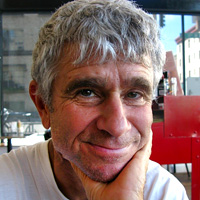The word "basin" has many different meanings here in the West. The rivers of the eastern U.S. erode mountains, carving valleys through which water flows to major river systems and then on to the ocean. But in much of the western U.S., the underlying geology has created a different scenario.
For the last 20 million years, there's been significant stretching and thinning of the Earth's crust here. As the crust thins, mountain chains are uplifted and the valleys between them drop. Many of us have driven across Nevada on Highway 50. The road goes up one mountain and drops into a valley over and over again. Geologists refer to these mountains as "horsts," German for "eagle's nest." And the valleys are "grabens," German for "ditch." Most of Nevada and parts of California, Oregon, Idaho and Arizona are known as the Basin and Range Province.
The last great unexplored chunk of American territory was that huge piece between the Rocky Mountains and the Sierra Nevada, south of the Columbia River and north of New Mexico. In 1842, Col. John Fremont was sent by the U.S. government to map that terrain. There was a persistent myth of the Buenaventura River, which was said to flow from the Rocky Mountains to the Pacific Ocean. This of course would be a convenient way for immigrants to get California. As Fremont searched for this critical passageway, he found that every single creek and river flowed into an interior drainage. He explored both the Great Salt Lake and the Humboldt sink in Nevada. He soon realized that not only was there no major river, but not one flowed into the ocean. So he named this huge region the Great Basin. A name still applied today.
The largest desert in the U.S. is the Great Basin Desert. This desert is defined by high elevation, very cold winters, relatively mild summers, precipitation mostly in the winter and finally by the indicator plant: the Great Basin sagebrush, a.k.a. Artemisia tridentata. So we have three overlapping uses of the word "basin." The Basin and Range Province is geologic, the Great Basin is hydrologic and finally the Great Basin Desert is botanical.
This is Michael Ellis with a Perspective.
